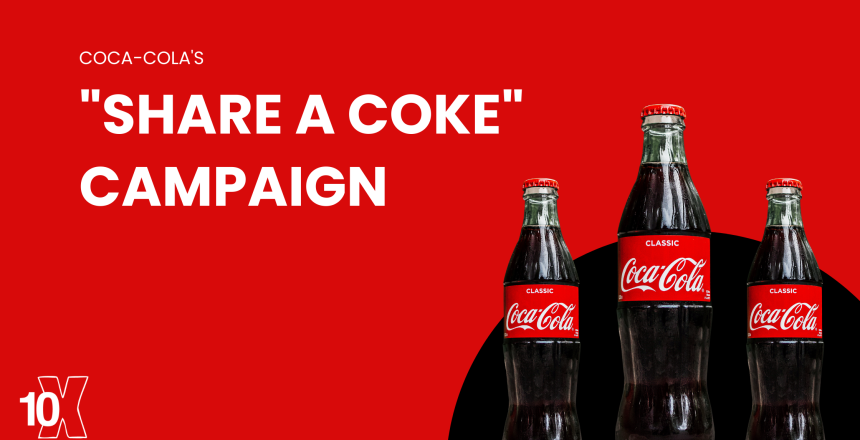In 2013, Coca-Cola launched its Share a Coke campaign, which featured bottles and cans with personalized labels bearing popular names. The campaign was a huge success, with sales of Coca-Cola increasing by 2% in the first year and customer engagement on social media skyrocketing.
The campaign was initially launched in Australia, where Coca-Cola had seen a decline in sales. In order to revitalize the brand and connect with younger consumers, the company decided to put personalized labels on bottles and cans of Coke, featuring popular names. This not only made the product more personal and relatable for customers, but also created a sense of scarcity and exclusivity, as certain names were more common than others.
In addition to the personalized labels, the campaign included a social media component, where customers could share photos of themselves with their personalized bottles and cans on Facebook, Twitter, and Instagram using the hashtag #ShareaCoke. This not only generated buzz and excitement around the campaign, but also encouraged customers to engage with the brand and share their experiences with their friends and followers.
The Share a Coke campaign was a huge success, with sales of Coca-Cola increasing by 2% in the first year. It also generated significant engagement on social media, with over 80,000 photos shared on Instagram alone. The campaign was so successful that it was later rolled out in other countries, including the United States and Canada.
Overall, the Share a Coke campaign demonstrated the power of personalization and the impact it can have on customer engagement and sales. By putting personalized labels on its bottles and cans, Coca-Cola was able to create a sense of exclusivity and encourage customers to share their experiences on social media, ultimately driving sales and increasing brand loyalty.
Reasons for the success of Coca-Cola’s Share a Coke campaign
Coca-Cola’s Share a Coke campaign was successful for a number of reasons:
- Personalization: The campaign personalized Coca-Cola bottles by replacing the brand’s logo with common first names, which made the product more relatable and appealing to consumers.
- Social media: The campaign was heavily promoted, where consumers could share pictures of their personalized bottles and use the hashtag #ShareaCoke. This helped to generate buzz and drive word-of-mouth marketing.
- Timing: The campaign was launched during the summer when people are more likely to be out and about and looking for refreshing drinks.
- Limited edition factor: The personalized bottles were only available for a limited time, which added to the sense of exclusivity and urgency for consumers to try the product.
- Emotional appeal: The campaign was able to tap into people’s emotions by emphasizing the idea of sharing and connecting with loved ones through a simple act like sharing a Coke.
Limitations to Coca-Cola’s Share a Coke campaign
There were a few limitations to Coca-Cola’s Share a Coke campaign:
- Limited names: The campaign only included a limited number of common first names, so not everyone could find their name on a bottle. This may have disappointed some consumers looking for their own personalized bottles.
- Limited geographical availability: The campaign was only available in certain countries, so it was not accessible to all consumers around the world.
- Limited time frame: As mentioned earlier, the personalized bottles were only available for a limited time, which meant that the campaign had a fixed end date. This may have limited the campaign’s overall impact and reach.
- Limited budget: Like any marketing campaign, Coca-Cola’s Share a Coke campaign had a limited budget, which may have limited the scope and reach of the campaign.
- Competition: The campaign faced competition from other brands and products, which may have limited its impact on consumer behavior and purchasing decisions.
Marketing lessons from Coca-Cola’s Share a Coke campaign
There are several marketing lessons that can be learned from Coca-Cola’s Share a Coke campaign:
- Personalization can be effective: Personalizing the product by replacing the brand’s logo with common first names made the product more relatable and appealing to consumers. This demonstrates the power of personalization in marketing.
- Social media can be a powerful tool: The campaign was heavily promoted, which helped generate buzz and drive word-of-mouth marketing. This shows the importance of having a strong social media presence and leveraging social media platforms to reach and engage consumers.
- Timing is essential: The campaign was launched during the summer when people are more likely to be out and about and looking for refreshing drinks. This demonstrates the importance of considering timing in marketing campaigns.
- Limited edition products can create a sense of exclusivity: The personalized bottles were only available for a limited time, which added to the sense of exclusivity and urgency for consumers to try the product. This shows the power of limited edition products in driving consumer interest and behavior.
- Emotional appeal can be effective: The campaign tapped into people’s emotions by emphasizing sharing and connecting with loved ones through a simple act like sharing a Coke. This demonstrates the importance of using emotional appeal in marketing to connect with consumers on a deeper level.

